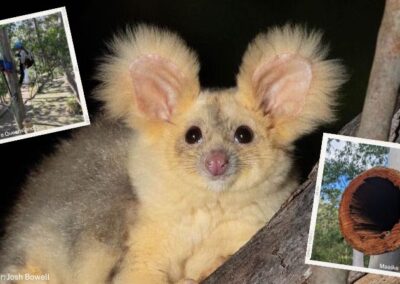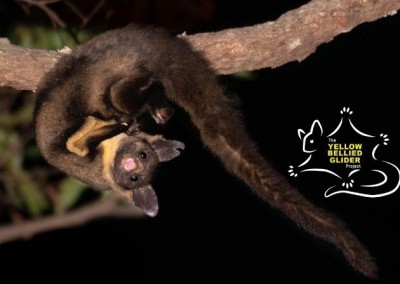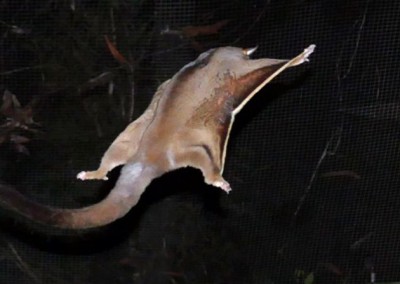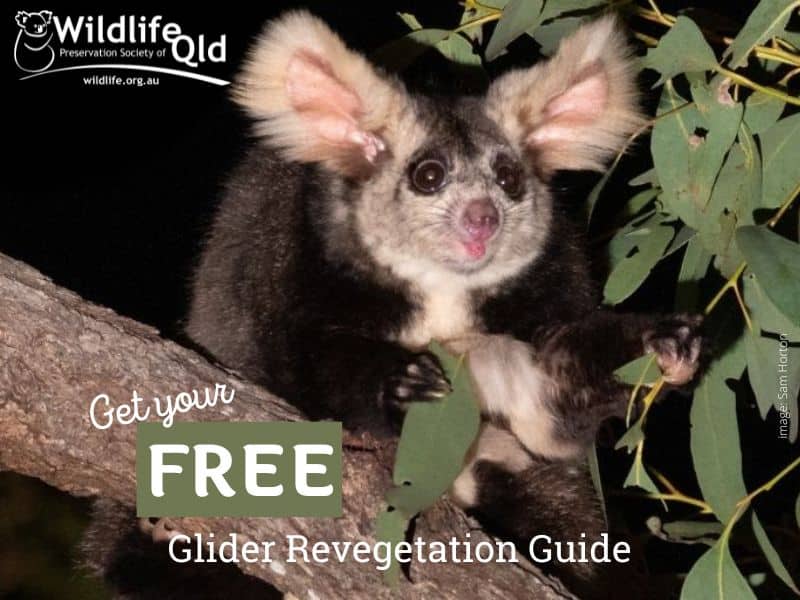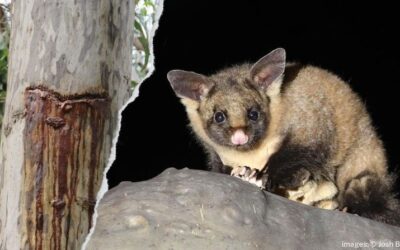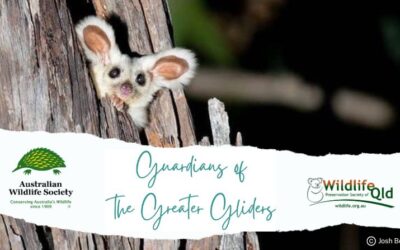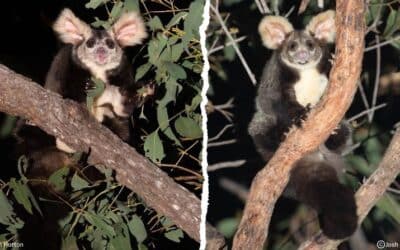Queensland
Glider Network
© Josh Bowell
The Queensland Glider Network (QGN) was established in early 2006 to support glider populations by being a statewide hub for communication, education, data collection, mapping, and information exchange.
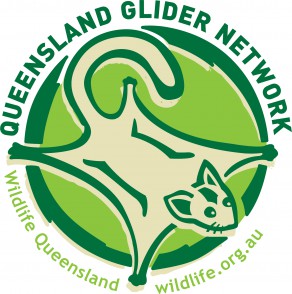
glider species found in Australia
Our aims
Australia and parts of South-East Asia are home to the world’s only gliding marsupials. The smallest glider species, the feathertail glider (Acrobates pygmaeus), and the largest, the southern and central greater glider (Petauroides volans), both rely on the eucalypt forests and woodlands of eastern Australia.
Vegetation clearing, along with a climate change-induced increase in the frequency and severity of bushfires, has driven declines in all glider species. However, greater gliders and yellow-bellied gliders (Petaurus australis), which are especially sensitive to habitat disturbance, have suffered the most. Both greater gliders and yellow-bellied gliders are now threatened under Commonwealth and Queensland legislation.
The goal of the QGN is to raise awareness of gliders and their habitat requirements in all Queensland local government areas to improve community knowledge and interest in these fascinating marsupials.
We aim to do this by:
- promoting glider-friendly landscape management
- enhancing habitat within remnant glider populations
- implementing monitoring programs for local glider populations
- working with state and local governments to implement conservation projects, develop programs and support communities in the restoration of habitat
- educating communities and raising awareness of the importance of gliders via workshops, webinars, and spotlighting events
- partnering with numerous landcare and habitat rehabilitation groups to restore vital glider habitat.
Current projects
Ongoing activities
QGN is currently working with local councils, landcare and conservation groups on various projects.
Additional ongoing QGN activities include:
- spotlighting events
- supporting scientific research
- hands-on school projects
- presentations to youth and community groups
- educational publications.
Get involved
QGN resources
Species profiles
- Feathertail gliders — broad-toed feathertail glider (Acrobates frontalis) and narrow-toed feathertail glider (Acrobates pygmaeus)
- Sugar gliders — Petaurus breviceps, Petaurus notatus, and Petaurus ariel
- Squirrel glider — Petaurus norfolcensis
- Mahogany glider — Petaurus gracilis
- Yellow-bellied glider — Petaurus australis
- Greater gliders — central and southern greater glider (Petauroides volans) and northern greater glider (Petauroides minor)
Fact sheets & guides
Videos, webinars & picture books
QGN webinars
- Threatened Glider Recovery web page. Watch Webinar recording
- Greater Gliders web page. Watch webinar recording
- Glorious Gliders web page. Watch webinar recording
Further reading
Articles & papers
- McGregor, D.C., Padovan, A., Georges, A. et al. Genetic evidence supports three previously described species of greater glider, Petauroides volans, P. minor, and P. armillatus. Sci Rep 10, 19284 (2020), accessed 9 February 2021. Genetic evidence supports three previously described species of greater glider, Petauroides volans, P. minor, and P. armillatus | Scientific Reports (nature.com) Sci Rep 10, 19284 (2020), accessed 9 February 2021. Published: .
- Integrative taxonomic investigation of Petaurus breviceps (Marsupialia: Petauridae) reveals three distinct species, Teigan Cremona, Andrew M Baker, Steven J B Cooper, Rebecca Montague-Drake, Alyson M Stobo-Wilson, Susan M Carthew, Zoological Journal of the Linnean Society, zlaa060, https://doi.org/10.1093/zoolinnean/zlaa060 Published: 13 July 2020.
Revegetate to save our threatened gliders
A Revegetation Guide to the Threatened Gliders of Southern Queensland explains the habitat needs of Queensland’s two largest gliding marsupials — the greater glider and the yellow-bellied glider — and what you can do to help them, particularly in regions affected by the 2019–2020 bushfires.
Downloaded the guide as a PDF document.
Or Email us to request a printed copy.
Latest QGN news
Yellow-bellied gliders: A closer look at their unique feeding habits
Threatened yellow-bellied gliders have unique feeding habits, particularly in tapping tree sap. Recognising their feed trees can be a valuable tool for monitoring populations and understanding their behaviour.
Australian Wildlife Society and Wildlife Queensland collaborate to fund new greater glider project
Join forces with the Australian Wildlife Society and Wildlife Queensland to become Guardians of the Greater Gliders and help secure a brighter future for these endangered marsupials.
Wildlife Queensland’s glider projects: Exciting updates and plans!
It’s been a busy few months of glider surveys and sightings for our Queensland Glider Network (QGN) and the Yellow-bellied Glider Project team! Their latest adventures include a search for Gizmo, the face of the Christmas appeal, and exciting yellow-bellied glider sightings.

